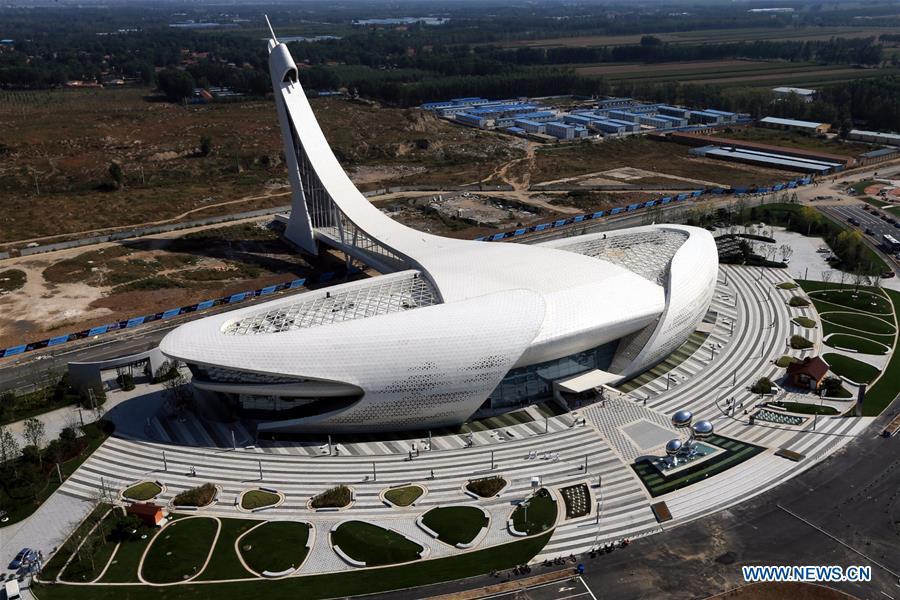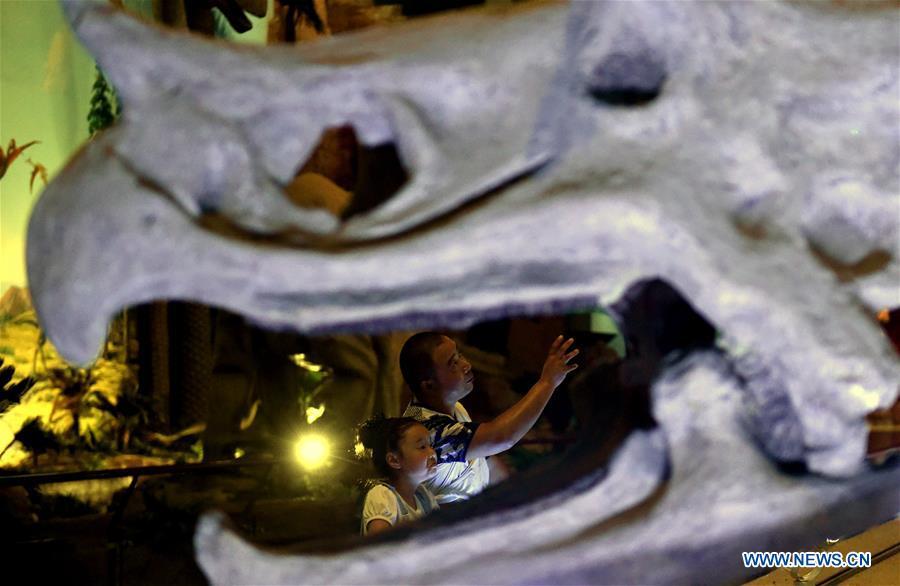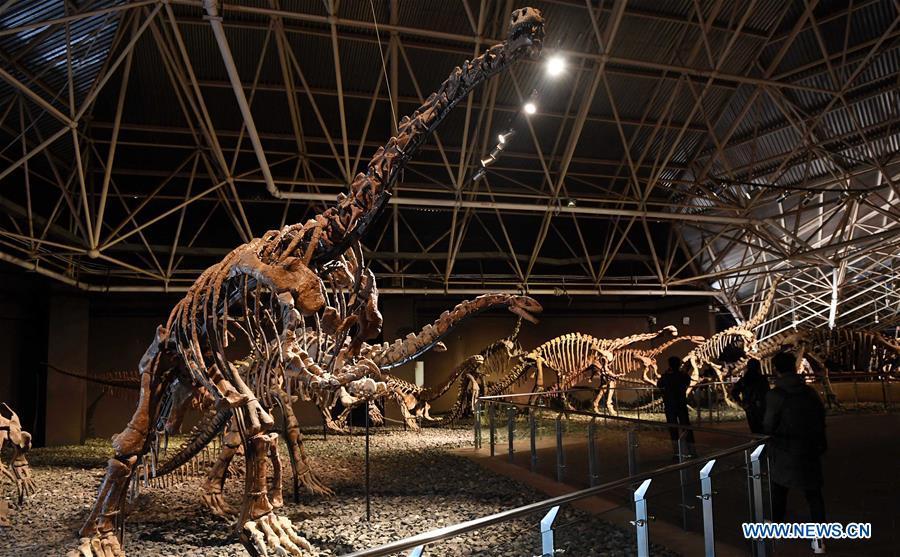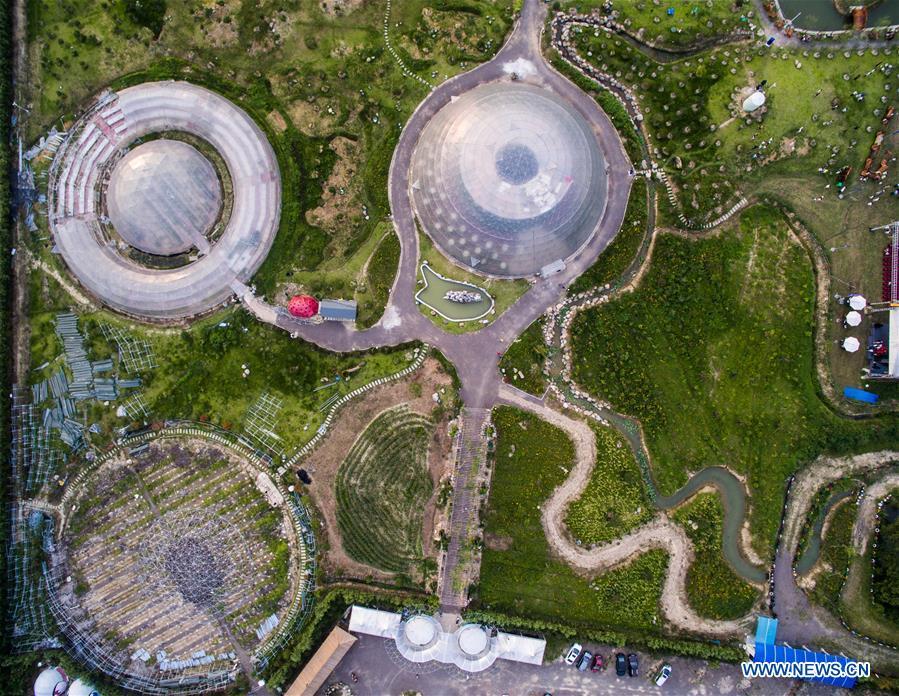
This aerial photo taken on Nov. 28, 2014 shows a newly-completed Hello Kitty theme park in Anji, east China's Zhejiang Province. China is slated to become world's largest theme park market by 2020, when the number of tourists is expected to exceed 230 million, according to a fresh report by U.S. engineering firm AECOM. The number of tourists to Chinese theme parks have seen an average annual growth of 13 percent in the past decade, and reached 190 million in 2017. The number is expected to keep the double digit growth in the following years, according to the report. The report attributes the rapid growth to Chinese consumers' rising income that sparks greater demands on leisure activities, as well as more convenient public transportation systems. (Xinhua/Xu Yu)

Photo taken on June 4, 2016 shows the night scene of Shanghai Disney Resort in Shanghai, east China. China is slated to become world's largest theme park market by 2020, when the number of tourists is expected to exceed 230 million, according to a fresh report by U.S. engineering firm AECOM. The number of tourists to Chinese theme parks have seen an average annual growth of 13 percent in the past decade, and reached 190 million in 2017. The number is expected to keep the double digit growth in the following years, according to the report. The report attributes the rapid growth to Chinese consumers' rising income that sparks greater demands on leisure activities, as well as more convenient public transportation systems. (Xinhua/Niu Yixin)

Photo taken on Sept. 27, 2015 shows the exhibition hall of the "East Dream, Future World" aerospace theme park in Sanhe, north China's Hebei Province. China is slated to become world's largest theme park market by 2020, when the number of tourists is expected to exceed 230 million, according to a fresh report by U.S. engineering firm AECOM. The number of tourists to Chinese theme parks have seen an average annual growth of 13 percent in the past decade, and reached 190 million in 2017. The number is expected to keep the double digit growth in the following years, according to the report. The report attributes the rapid growth to Chinese consumers' rising income that sparks greater demands on leisure activities, as well as more convenient public transportation systems. (Xinhua/Li Mingfang)

Tourists visit Harbin Ice and Snow World, northeast China's Heilongjiang Province, Jan. 5, 2017. China is slated to become world's largest theme park market by 2020, when the number of tourists is expected to exceed 230 million, according to a fresh report by U.S. engineering firm AECOM. The number of tourists to Chinese theme parks have seen an average annual growth of 13 percent in the past decade, and reached 190 million in 2017. The number is expected to keep the double digit growth in the following years, according to the report. The report attributes the rapid growth to Chinese consumers' rising income that sparks greater demands on leisure activities, as well as more convenient public transportation systems. (Xinhua/Wang Kai)

Tourists view dinosaur fossils at the World Dinosaur Valley in Lufeng County, southwest China's Yunnan Province, Dec. 23, 2017. The Lufeng World Dinosaur Valley, a dinosaur theme park, exhibited over 100 fossils of a variety of dinosaurs. China is slated to become world's largest theme park market by 2020, when the number of tourists is expected to exceed 230 million, according to a fresh report by U.S. engineering firm AECOM. The number of tourists to Chinese theme parks have seen an average annual growth of 13 percent in the past decade, and reached 190 million in 2017. The number is expected to keep the double digit growth in the following years, according to the report. The report attributes the rapid growth to Chinese consumers' rising income that sparks greater demands on leisure activities, as well as more convenient public transportation systems. (Xinhua/Lin Yiguang)

Tourists view dinosaur fossils at the World Dinosaur Valley in Lufeng County, southwest China's Yunnan Province, Dec. 23, 2017. The Lufeng World Dinosaur Valley, a dinosaur theme park, exhibited over 100 fossils of a variety of dinosaurs. China is slated to become world's largest theme park market by 2020, when the number of tourists is expected to exceed 230 million, according to a fresh report by U.S. engineering firm AECOM. The number of tourists to Chinese theme parks have seen an average annual growth oTourists view dinosaur fossils at the World Dinosaur Valley in Lufeng County, southwest China's Yunnan Province, Dec. 23, 2017. The Lufeng World Dinosaur Valley, a dinosaur theme park, exhibited over 100 fossils of a variety of dinosaurs. China is slated to become world's largest theme park market by 2020, when the number of tourists is expected to exceed 230 million, according to a fresh report by U.S. engineering firm AECOM. The number of tourists to Chinese theme parks have seen an average annual growth of 13 percent in the past decade, and reached 190 million in 2017. The number is expected to keep the double digit growth in the following years, according to the report. The report attributes the rapid growth to Chinese consumers' rising income that sparks greater demands on leisure activities, as well as more convenient public transportation systems. (Xinhua/Lin Yiguang)f 13 percent in the past decade, and reached 190 million in 2017. The number is expected to keep the double digit growth in the following years, according to the report. The report attributes the rapid growth to Chinese consumers' rising income that sparks greater demands on leisure activities, as well as more convenient public transportation systems. (Xinhua/Lin Yiguang)

Visitors watch performance at a theme park in Shenzhen City of south China's Guangdong Province, Oct. 4, 2017. China is slated to become world's largest theme park market by 2020, when the number of tourists is expected to exceed 230 million, according to a fresh report by U.S. engineering firm AECOM. The number of tourists to Chinese theme parks have seen an average annual growth of 13 percent in the past decade, and reached 190 million in 2017. The number is expected to keep the double digit growth in the following years, according to the report. The report attributes the rapid growth to Chinese consumers' rising income that sparks greater demands on leisure activities, as well as more convenient public transportation systems. (Xinhua/Mao Siqian)

Photo taken on Aug. 1, 2015 shows an aerial view of a space-themed agricultural park hosting a tourism festival for the youth in Tiantai County, east China's Zhejiang Province. China is slated to become world's largest theme park market by 2020, when the number of tourists is expected to exceed 230 million, according to a fresh report by U.S. engineering firm AECOM. The number of tourists to Chinese theme parks have seen an average annual growth of 13 percent in the past decade, and reached 190 million in 2017. The number is expected to keep the double digit growth in the following years, according to the report. The report attributes the rapid growth to Chinese consumers' rising income that sparks greater demands on leisure activities, as well as more convenient public transportation systems. (Xinhua/Xu Yu)

Photo taken on Aug. 1, 2015 shows an aerial view of a space-themed agricultural park hosting a tourism festival for the youth in Tiantai County, east China's Zhejiang Province. China is slated to become world's largest theme park market by 2020, when the number of tourists is expected to exceed 230 million, according to a fresh report by U.S. engineering firm AECOM. The number of tourists to Chinese theme parks have seen an average annual growth of 13 percent in the past decade, and reached 190 million in 2017. The number is expected to keep the double digit growth in the following years, according to the report. The report attributes the rapid growth to Chinese consumers' rising income that sparks greater demands on leisure activities, as well as more convenient public transportation systems. (Xinhua/Xu Yu)

Tourists watch fish in the Ocean Park in Hong Kong, south China, May 29, 2012. China is slated to become world's largest theme park market by 2020, when the number of tourists is expected to exceed 230 million, according to a fresh report by U.S. engineering firm AECOM. The number of tourists to Chinese theme parks have seen an average annual growth of 13 percent in the past decade, and reached 190 million in 2017. The number is expected to keep the double digit growth in the following years, according to the report. The report attributes the rapid growth to Chinese consumers' rising income that sparks greater demands on leisure activities, as well as more convenient public transportation systems. (Xinhua/Chen Xiaowei)

Sand sculpture artists work at a sand sculpture theme park in Binzhou High-tech Development Zone of east China's Shandong Province, July 19, 2017. China is slated to become world's largest theme park market by 2020, when the number of tourists is expected to exceed 230 million, according to a fresh report by U.S. engineering firm AECOM. The number of tourists to Chinese theme parks have seen an average annual growth of 13 percent in the past decade, and reached 190 million in 2017. The number is expected to keep the double digit growth in the following years, according to the report. The report attributes the rapid growth to Chinese consumers' rising income that sparks greater demands on leisure activities, as well as more convenient public transportation systems. (Xinhua/Chu Baorui)

Tourists enjoy colorful lights during a light art festival held at a space theme park in Yanjiao of Sanhe City, north China's Hebei Province, July 29, 2016. China is slated to become world's largest theme park market by 2020, when the number of tourists is expected to exceed 230 million, according to a fresh report by U.S. engineering firm AECOM. The number of tourists to Chinese theme parks have seen an average annual growth of 13 percent in the past decade, and reached 190 million in 2017. The number is expected to keep the double digit growth in the following years, according to the report. The report attributes the rapid growth to Chinese consumers' rising income that sparks greater demands on leisure activities, as well as more convenient public transportation systems. (Xinhua/Li Mingfang)























